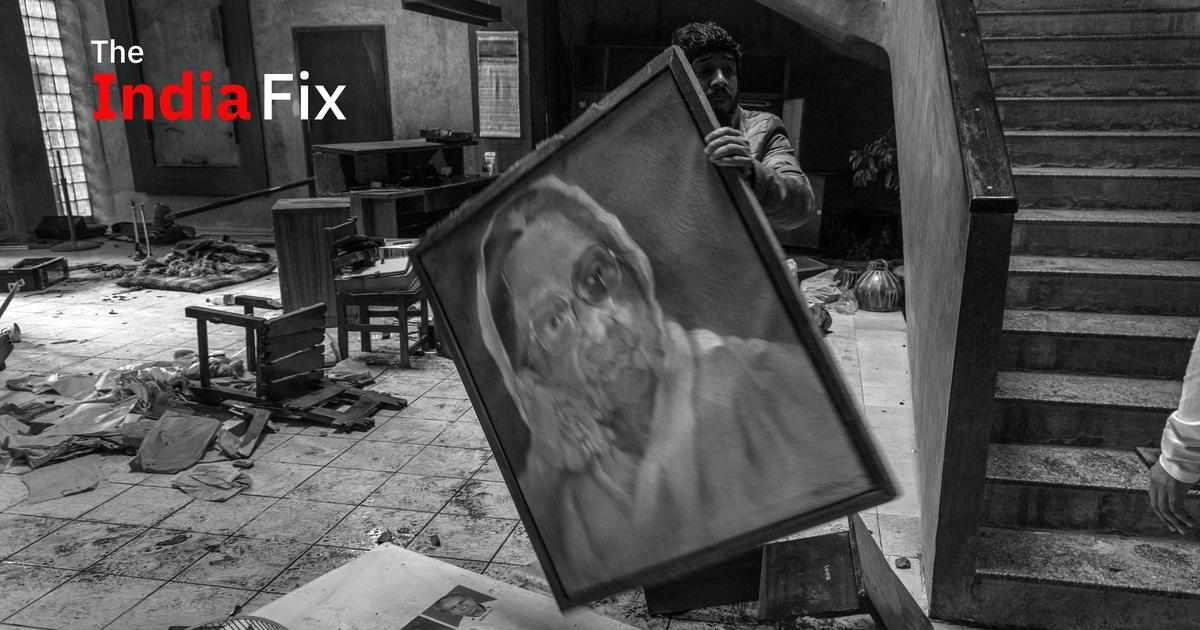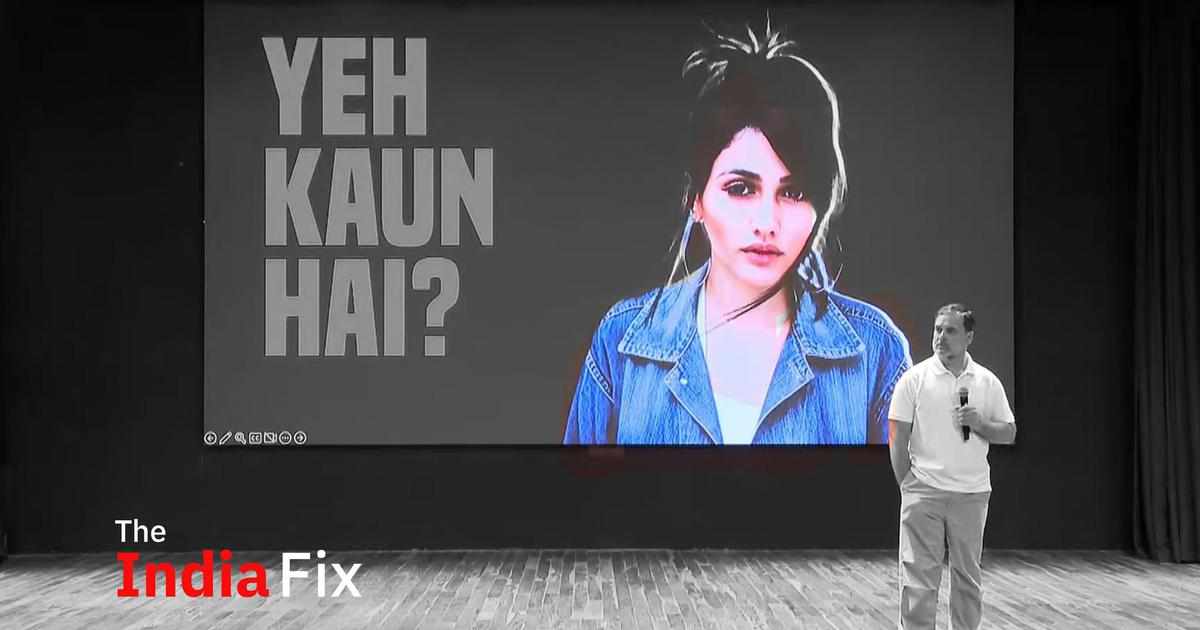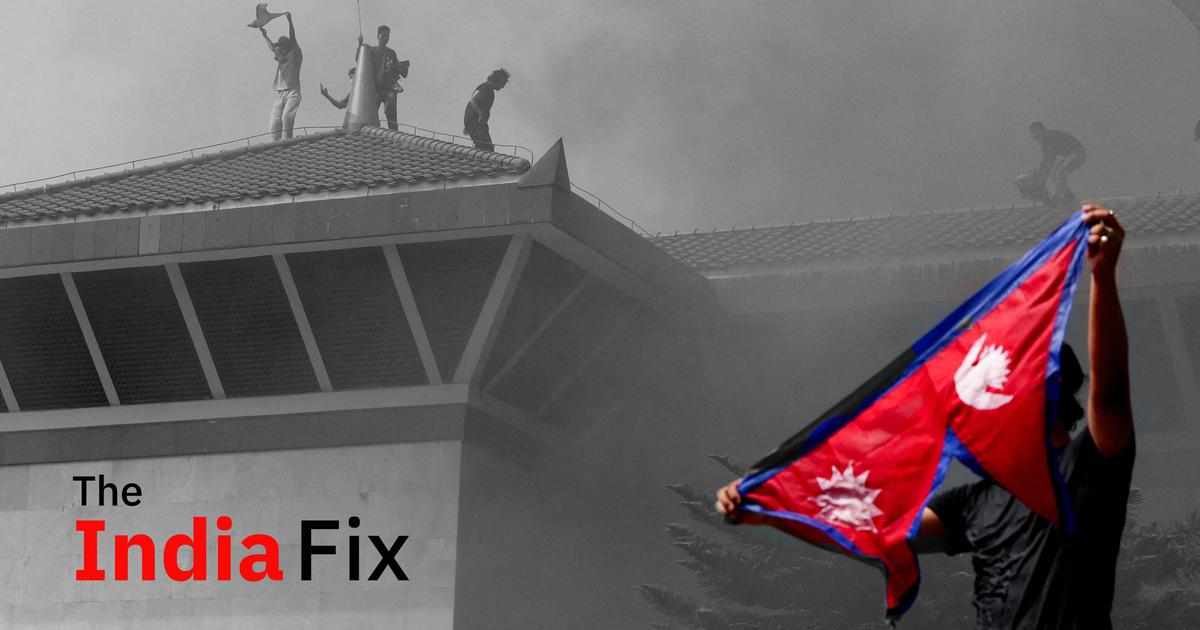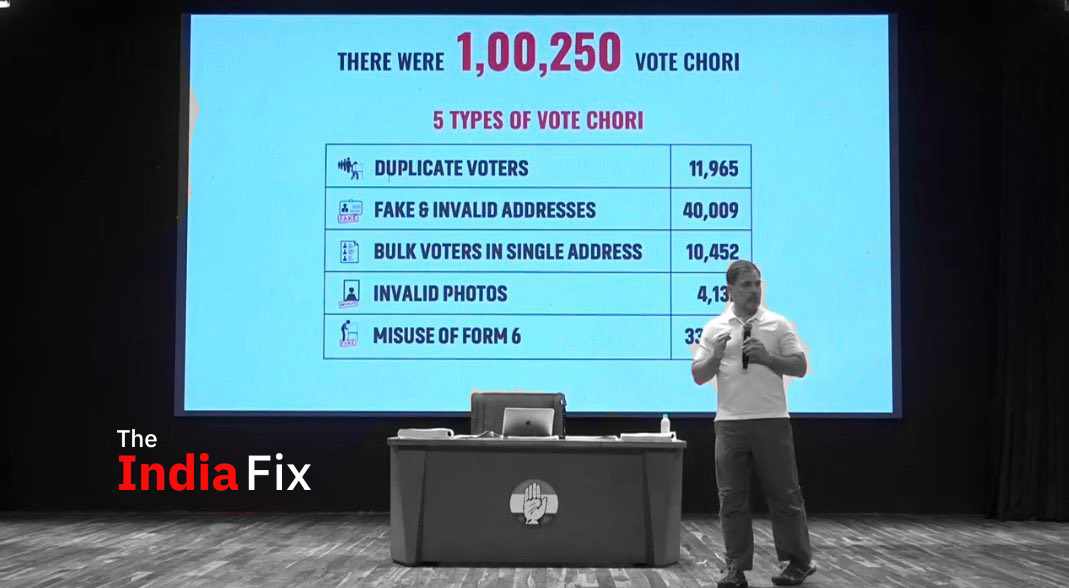
Welcome to The India Fix by Shoaib Daniyal, a newsletter on Indian politics. As always, if you’ve been sent this newsletter and like it, to get it in your inbox every week, sign up here (click on “follow”).
Have feedback, interesting links or think I am wrong? Write to me: theindiafix@scroll.in
On Wednesday, on the festival of Ram Navami, the Bharatiya Janata Party published a post on social media with the image of the idol of the Hindu god Ram in Ayodhya superimposed with a call to vote for the party.
This is not the first time the BJP has campaigned on the basis of Lord Ram in this election campaign. Arguably, the party’s role in the construction of the Ram Temple in Ayodhya, built on the site demolished Babri mosque, is its biggest campaign plank.

Secular Janus
On paper, India is a secular country. Secularism is part of the country’s preamble and has also been held to be a part of the Basic Structure – a feature of the Constitution so central to the document that even the legislature cannot abolish it using an amendment. How then are such appeals to religion being allowed?
Even more explicitly, appeals to faith during an election campaign are barred by a federal law. In the Representation of People Act, an election appeal “on the ground of his religion” or “appeal to religious symbols” is defined as a “corrupt practice”.
So what gives?

Weak watchdog
Part of the reason is, of course, the Election Commission.
As has been noted quite widely now, the Election Commission has been facing serious allegations of bias. Ironically, even as the Commission ignores the BJP’s use of religion as a vote catching technique, it has served a notice to a Congress candidate from Nagaland, SS Jamir, for saying that “religious believers are being threatened and persecuted” and accusing the BJP and its parent organisation, the Rashtriya Swayamsevak Sangh, of “working together to make India one nation, one culture and one religion only”. These accusations of majoritarianism against the BJP were, bizarrely enough, interpreted by the Commission as an appeal by the candidate to “vote on grounds of his religion”.
As my colleague Vineet Bhalla has reported, the Election Commission is now appointed by the Union government without any checks and balances. In effect, the strongest player in the game – the BJP – gets to appoint the umpire. This glaring conflict of interest means that it is unlikely that the Election Commission will actually ever penalise the BJP for using religious symbols as vote catchers.

Court side
In theory, if the Election Commission fails to do its job as a referee, Indian citizens could turn to the judicial system. In a democratic system of checks and balances, it is the courts that are responsible for upholding the law. Thus, it would be natural that they would uphold the Representation of People Act as well as Constitutional values such as secularism.
Unfortunately, like the Election Commission, the judiciary has not done its duty of being an arbiter very well when it comes to elections. In fact, it might even have made things worse.
That is the consequence of a case dating back to 1987, when Shiv Sena member Ramesh Yeshwant Prabhoo ran for the Vile Parle Assembly seat in Mumbai One of Prabhoo’s star campaigners was Sena supremo Bal Thackeray – a man who made it quite clear though his career that he did not believe in secularism.
Thackeray delivered a number of election speeches in Mumbai that quite openly used religion to canvas for votes. “We are fighting this election for the protection of Hinduism,” Thackeray said. “Therefore, we do not care for the votes of the Muslims. This country belongs to Hindus and will remain so”. In another speech, Thackery claimed, “Anybody who stands against the Hindus should be showed or worshipped with shoes.”
A petitioner filed a case claiming that Thackeray had violated the Representation of the People Act. The petitioner also filed the same complaint against Thackeray’s lieutenant Manohar Joshi for saying in his election speech that the first “Hindu rashtra will be established in Maharashtra”.
However, the Supreme Court did not penalise Prabhoo.
The court ingeniously held that while the speeches did make appeals to Hinduism and Hindus, the terms here did not apply in the religious sense and could not be said to violate the Representation of the People Act.
“The public speeches in question did not amount to appeal for votes on the ground of his religion and the substance and main thrust thereof was ‘Hindutva’, which means the Indian culture and not merely the Hindu religion,” the judgement read.
Notably, at this time, Hindutva was not a part of India’s central ruling ideology in the way it is today. However, the Supreme Court’s decision provide a huge boost for the BJP. In its 1996 manifesto, the party declared that “the Supreme Court, too, finally, endorsed the true meaning and content of Hindutva as being consistent with the true meaning and definition of secularism”.
In effect, the Supreme Court had greenlit appeals to Hinduism in an election, arguing that since it was synonymous with being Indian, it was, quixotically enough, not an appeal to religion.
Rising tide
To be fair, the principle that religion should not be used in elections as always been ignored in India, at least to some extent. However, it is also true that the extent to which this rule can be bent has increased. In the 1980s and 1990s, the candidate from a regional party for the Assembly eletions got away with it. In 2024, it is the ruling party at the Centre itself.
In spite of the lack of any legal and institutional checks, Indian voters themselves are not overwhelmed by appeals to faith. Their votes often hinge on a range of issues – economic, social and, of course, faith too.
However, since Hindutva has strong upper caste purchase, appeals to faith are significantly amplified in elite spaces such as the media and end up creating a strong idea of “hawa” – or a perception that the BJP is dominant.






















Write a comment ...